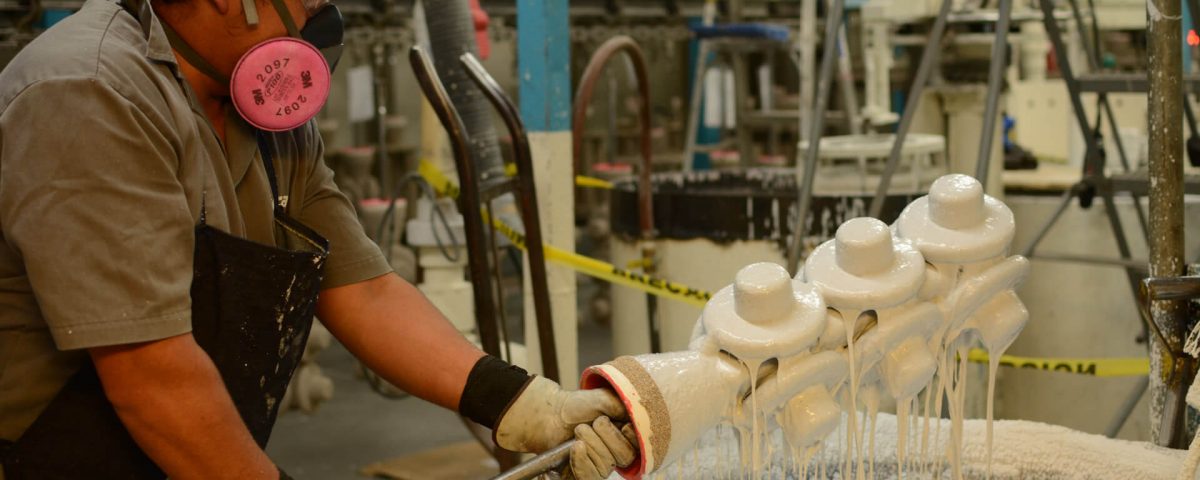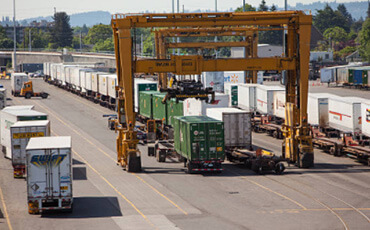
The Manufacturing Process of Die Casting
July 19, 2021
Determining the Size of Your Investment Casting Project
September 17, 2021Complete Guide to Investment Casting Manufacturing:
Precision investment casting is a process by which a metal casting is designed and created, and is especially known for its near net shape capabilities. An investment casting manufacturer can design functional components to help streamline processes and create custom casts for almost any industry.
The Process
The steel casting process has been around for centuries, and has also been called “lost-wax casting.” The process usually begins with the production of a master pattern, which is the prototype that finished product will be based on. This pattern is often made of wax, since it melts easily and can be reused. From the master pattern, the casting mold is created. This is also called the master die, and its size must be carefully calculated to consider shrinkage of wax and shrinkage of ceramic material.
Next, wax patterns are produced and assembled, often for individual parts or pieces of the final casting. Several wax patterns can be combined to make a single casting, or many patterns can be connected and later poured together to create many castings in one process for a more efficient process.
The ceramic mold, or the investment, is produced through the repeating of a series of steps, being dipped into a refractory slurry until the proper thickness is achieved. After the coat over the pattern is thick enough, it is allowed to air dry to properly harden, which can take 16-48 hours on average, though it can be accelerated by various processes.
After the mold has dried, the investment cast is turned upside down and heated, causing the wax to flow out of the mold and allowing the cavity to be used for the steel casting parts. To minimize stresses on the wax, the cast is heated as quickly as possible in order for the outer wax to melt and drain quickly, allowing the rest of the wax to expand. This followed by a burnout process where the wax is heated anywhere from 1,000-2,000 degrees Fahrenheit, further strengthening the mold and getting rid of any leftover wax.
While the mold is still hot, the liquid metal casting is poured, with the heat allowing it to flow easily through cavity, filling both detailed and thin sections well. It may be poured either by gravity, or through other pressure assisted methods such as vacuum casting. The cast is then allowed to set as the solidification process takes place.
The final step to create the steel casting part is the divesting process, where the ceramic mold is broklen free from the investment cast. The casting is cleaned up a bit, removing any signs of the casting process. Many different alloys or metals may be used, but this process allows for an excellent surface finish, as well as the casting of extremely complex parts.
Who Benefits
With the ability to create a wide range of investment castings to fit diverse needs for shape, size, and material used, investment casting can benefit businesses across a wide range of industries. Alloys used can range from carbon, alloy, and stainless steel all the way to materials such as cobalt, copper, and high nickel alloys. This allows castings to be customized to fit almost any need or budget.
One example is the aerospace industry, where Intercast was awarded two het engine application components. Precise castings are ideal for everything from hydraulic fluid system components to flight critical and safety components. An experienced casting company can create major advantages for the aerospace industry.
Another industry where investment casting has a major influence is in the oil & gas industry, whether the company is downstream, midstream, or upstream. Whether its downhole drilling or underwater exploration, the needs for durable casts that can perform in any temperature or situation is critical for the success of any operation. Quality investment casts save time and money.
These are just two examples of industries where investment casts play a major role in shaping critical components. Among other main beneficiaries are the automotive industry, food equipment, power generation, and security industries. With the ability to create complex parts and design, investment casting allows for more efficiency throughout the supply chain.
Importance of Experience
Due to the intricate nature of investment castings, it is paramount that work is done with an experienced company with tight controls across the entire business chain. Often, that starts with an efficient investment casting foundry that can not only deliver world-class parts in a cost-effective way, but also be able to communicate easily in real-time for the most collaboration possible. An efficient foundry can also aid in almost any size production run, whether the project is big or small.
In all businesses, the difference between success and failure can often come down to a centimeter, which is why precision is so important in a complex process such as investment casting. A small deviation from what the finished cast should be can be the difference between a working cast and what that does not do what it should.
Working with an experienced investment casting company also allows you to get exactly what you are looking for, with almost unlimited design flexibility and rapid prototyping to help you visualize the finished cast. At Intercast, we provide our customers with an infinite choice of alloys, the ability to configure a design for virtually any shape, and produce the components as cast or finished machined.
If you are looking to for an investment cast to be done for your business, be sure to ask around for multiple quotes, finding the company that is right for you. In addition to cost, check on the ability of the casting company to give you the design flexibility you need, as well as the capacity to give you a shorter lead time with the production run time that will be right for your business.
At Intercast, our leadership team has over 125 years of combined experience in investment casting. We own our own manufacturing process and have the ability to create intricate parts at nearly any volume production run. Contact us today to request a free quote and let us know how we can help your business.





